For practice partners Kristen H. Fritz, DDS, MS, and Cliff Wilson, DDS, MS, the right practice management software can provide invaluable insight into the practice’s health and keep everyone on the same page.
By Greg Thompson | Photography by Christopher Nieto
After 7 years in practice, Kristen H. Fritz, DDS, MS, had a decision to make: keep going as a solo practitioner in a relatively small office or build a new practice from scratch and explore partnerships with other orthodontists. Fritz had an undergraduate degree in economics so she ran the numbers, calculated the risk, and made a bold decision to build a new office.
A vacant lot near her solo practice in Holly Springs, NC, came up for sale and Fritz completed the transaction. The arduous building process eventually yielded a freestanding state-of-the-art 7,000-square-foot orthodontic/dental office with 4,000 square feet dedicated to orthodontics. She sold the remaining 3,000 square feet to a local dentist.
“It was a long and involved process, and the last 6 months of construction were really tough,” reveals Fritz, who earned her undergraduate degree at the University of Virginia and her DDS at Virginia Commonwealth University School of Dentistry. “In the end, it was totally worth it.”
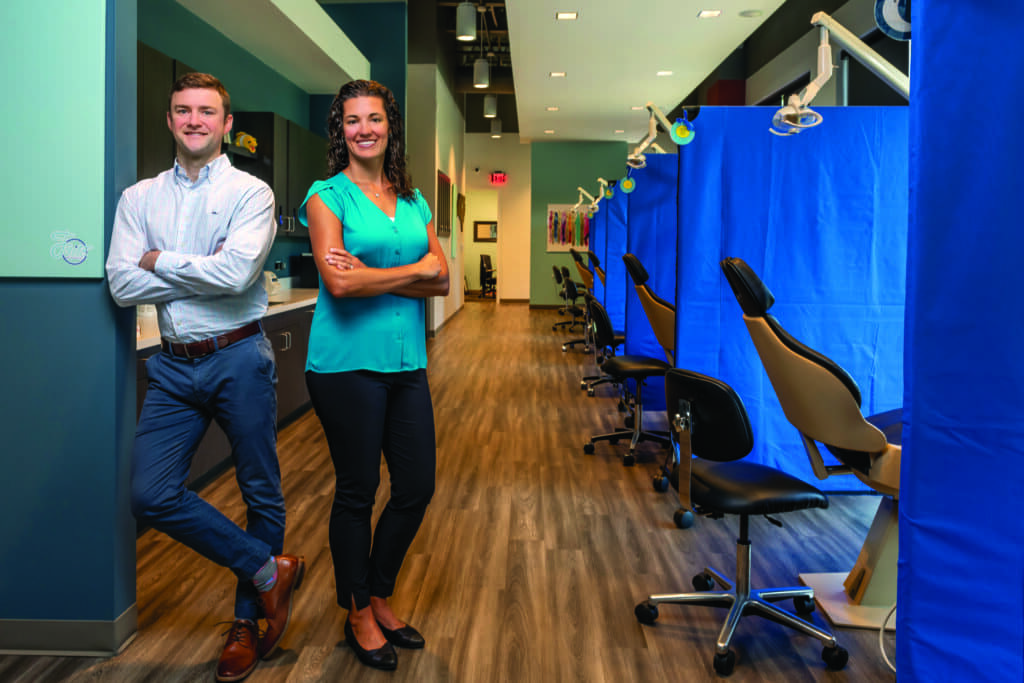
After a comprehensive search, Fritz eventually hired Cliff Wilson, DDS, MS, as an associate. The arrangement worked well and Wilson became an equal partner in January 2021, giving birth to Fritz & Wilson Orthodontics. Fritz attributes their success to communication above all.
“I observed a lot of my friends going through partnerships, and I realized that a lot of partnerships fail due to poor communication,” she says. “The most common link between every bad partnership was lack of communication. When I brought Cliff on, that was my biggest priority.”
“I agree that communication is a big part of our success,” says Wilson, who earned a biology degree from UNC Wilmington and a DDS at the University of North Carolina School of Dentistry. “Even if we may have minor clinical or practice management differences, we are open to other ways of doing things. Humility, communication, and open mindedness are all important for a harmonious practice partnership.”
Fritz and Wilson’s offices have adjoining doors for easy communication between the two of them. From there, a modern and spacious office spans out to encompass ten chairs—seven in the main bay plus one glassed-in cubicle primarily for debonding appointments. The last two chairs are reserved for treatment coordinator sessions and recall or observation-pool patients.
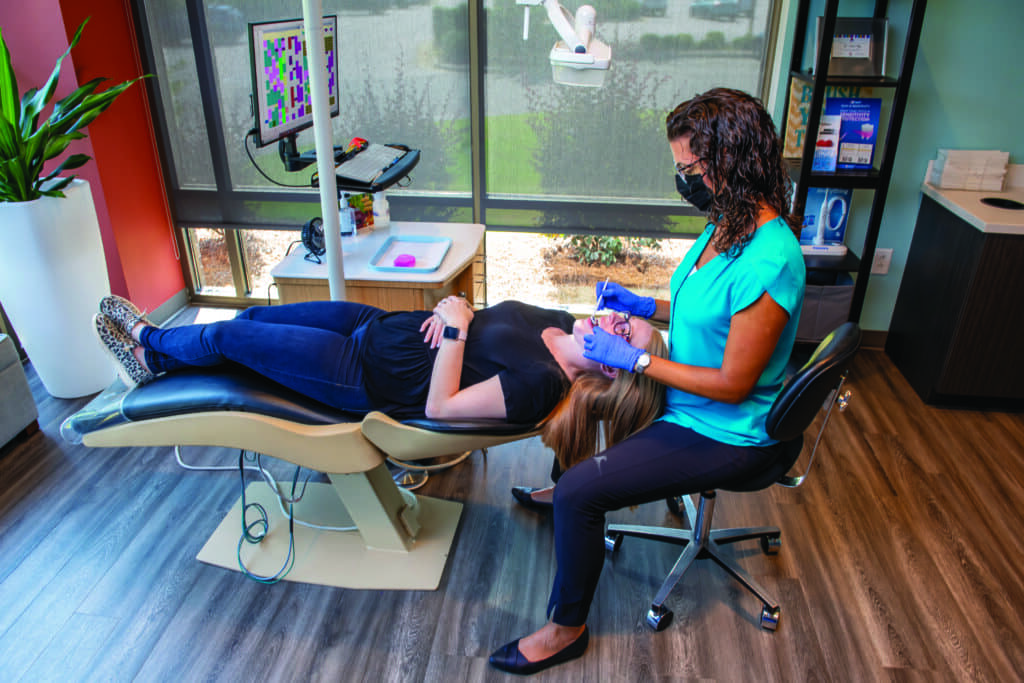
A Career Born from Personal Experience
Going on 3 years at the new building and 11 years in practice, Fritz has settled into a particularly busy phase of her career. The path to that career started somewhat unconventionally, without the typical health-related undergrad degree (economics). Part of Fritz’s motivation for pursuing orthodontics came from watching her sister’s transformation.
“She had orthognathic surgery along with her orthodontic treatment,” Fritz remembers. “I saw the changes, and it really brought out her full personality. She was really quiet and not very confident beforehand. Afterward her personality blossomed and she was a different person. She was confident and outgoing. I wanted to help that occur in other people and wanted to see that transformation in my patients.”
After dental school, Fritz received her specialty training in orthodontics at the University of North Carolina at Chapel Hill School of Dentistry where she graduated with her Master’s of Science in dentistry. While attending UNC, she received two National Research Awards from the American Academy of Dental Sleep Medicine for her research in sleep disorders affecting pediatric orthodontic patients.
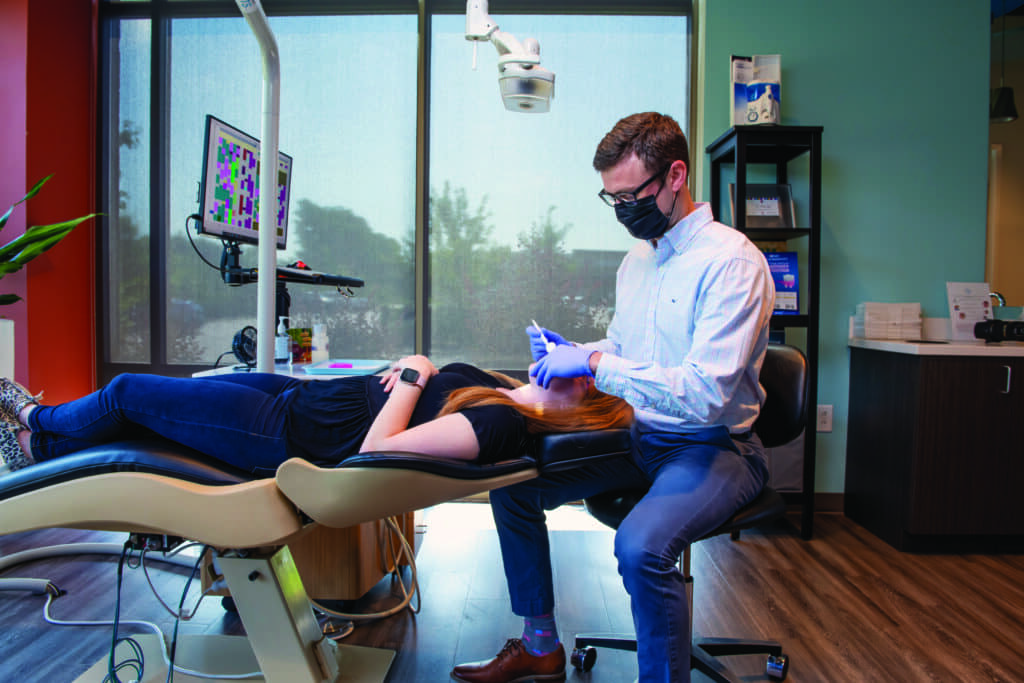
Wilson’s decision to pursue orthodontics grew from his own personal experience getting braces as a teenager. Perceptive enough to know how lucky he was, Wilson wanted the opportunity to pass along the benefits of orthodontics to his own patients. He adds, “Once I learned more about orthodontics, I could see that the way that I think in three dimensions helped with the whole endeavor. It’s fun and it’s also a fun age group. We treat teens and adults. At this point, about 30% of our patients are adults.”
Going All-In
With many manufacturers vying for their attention, consensus on equipment purchases remains vital to maintaining harmony in the practice. Fritz and Wilson are relatively cautious, opting for a wait-and-see approach. “We usually let the early adapters go get it,” Fritz admits. “We watch, and we’ll usually find a friend or two who are using the product. We keep asking how it’s going, what pitfalls it has, and see if they can really integrate it into everyday use.”
Once the money is spent, Fritz and Wilson employ an all-in approach that tests the manufacturer’s ability to answer questions and evolve with changing needs. The philosophy encompasses clinical preferences, as well as practice management software.
With so many software options, Fritz used her background in economics to evaluate different technological solutions within the practice management realm, even employing the orthodontic practice management consulting firm Impact360 for extra advice. Impact 360 informed Fritz about Gaidge, the business intelligence/analytics platform.
“[My practice was] actually one of the first practices on Gaidge, and it was not long before we got all our systems down to where every single appointment type had a different code,” remembers Fritz. “How the patient leaves that appointment also generates a code. It all feeds into Gaidge so that we can more closely monitor our numbers and track the health of our practice.”
At the time, Fritz admits that many of her colleagues had not even heard of Gaidge. Despite the practice’s mostly wait-and-see philosophy, Fritz was convinced that the Gainesville, Ga-based company could fulfill its promises and improve practice efficiency on several fronts.
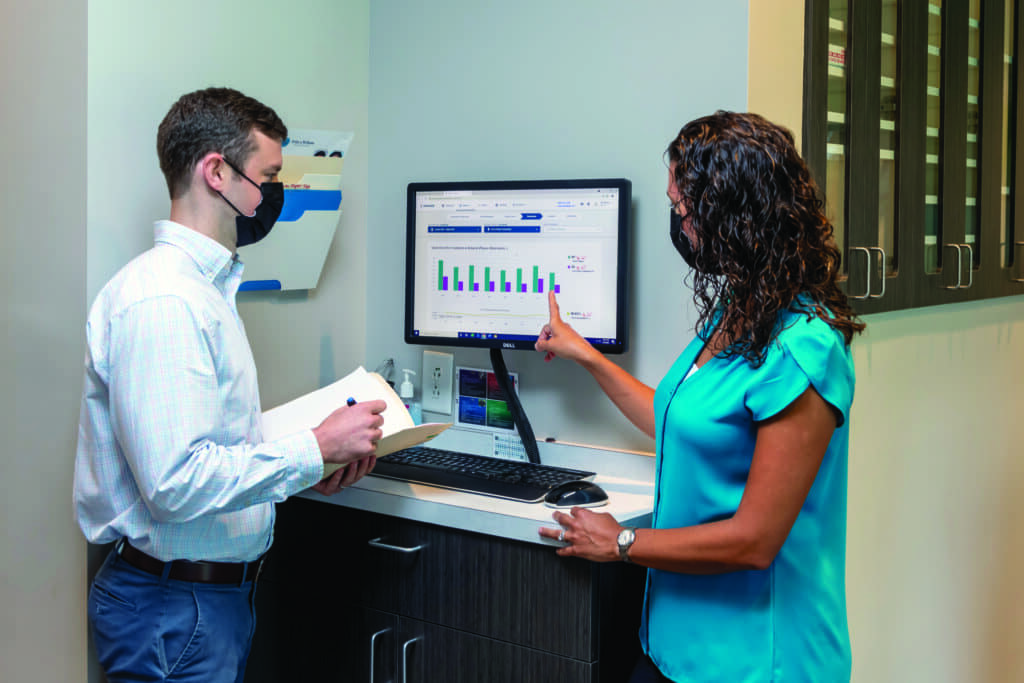
Tracking the Health of the Practice
On the clinical side, Wilson puts it this way: “Gaidge helps you to see, pretty simply, your clinical efficiency. Kristen and I both want to finish cases really well, and Gaidge will show you in real time how you’re doing with treatment timelines and treatment estimates so that you are giving patients the right information up front. You can also look at your repair rate quickly and communicate that to the team with the easy-to-look-at graphics. It gets our whole clinical team on the same page with clinical efficiency.”
Gaidge representatives say the product can streamline the process of measuring, monitoring, and analyzing practice performance data in one platform. After 8 years of real-world use, Fritz confirms the claims, as well as a few more. The ability to “dial into emergencies,” for example, has been an unexpected benefit.
“Emergency numbers allow us to see if we are hitting the percentages we want,” Fritz explains. “It takes the subjectivity out of it. It’s a solid number—a fact, and team members can see how much time we’re spending on emergencies. It gets them rallying behind the idea that we don’t want to see this many emergencies, and what can we do to be more clinically efficient so that we are not wasting our chair time on emergencies. It inspires them to come up with solutions without us really having to get involved, which has been awesome.”
From calculating financial health to tracking patient treatment efficiency, Gaidge synthesizes calculations into segments using dashboards and charts. The idea is to bring science into what can all-too-often be an art. “It helps us diagnose the health of the practice,” Fritz says. “I love Gaidge because it’s color coordinated. We can easily see if we are hitting the mark where we need to be, but look at where we are in the red—this is where we need to improve.”
When the entire team can see the objective markers, it encourages solutions because Fritz and Wilson want to “work smarter, not harder” because “time is the most valuable asset.” And for orthodontists juggling family obligations and professional duties, an intuitive practice management platform helps to create a better work/life balance.
“As a mom, I will pay anything for a system in my office that will give me time,” says Fritz, who is married with two sons ages 6 and 8. “I used to have to stay in the office running reports to check out how many emergencies we had or how many new patients we had compared to last year. Now I can be at baseball practice sitting in the bleachers and I have my app on my phone to look at the health of our practice. It not only lets us see where we’re doing poorly, but it also helps us celebrate what we’re doing right and give credit to our staff who are working hard to make us better.”
That pesky emergency rate, for example, has dramatically improved thanks to easily digestible data. New starts are up and marketing efforts have been redirected to get more adults in the door. Proper prioritizing has led to a 30% boost in adult examinations as compared to the same time last year.
Gaidge designers continually add features in response to real-world dilemmas. In 2021, a more intuitive design (Gaidge 2.0) added greater visibility to practice goals, along with better planning and tracking tools. Fritz and Wilson confirm that the redesigned platform features easier navigation, color-coded metrics and goals, plus several new hover-over features that provide added information when users want to drill down on details.
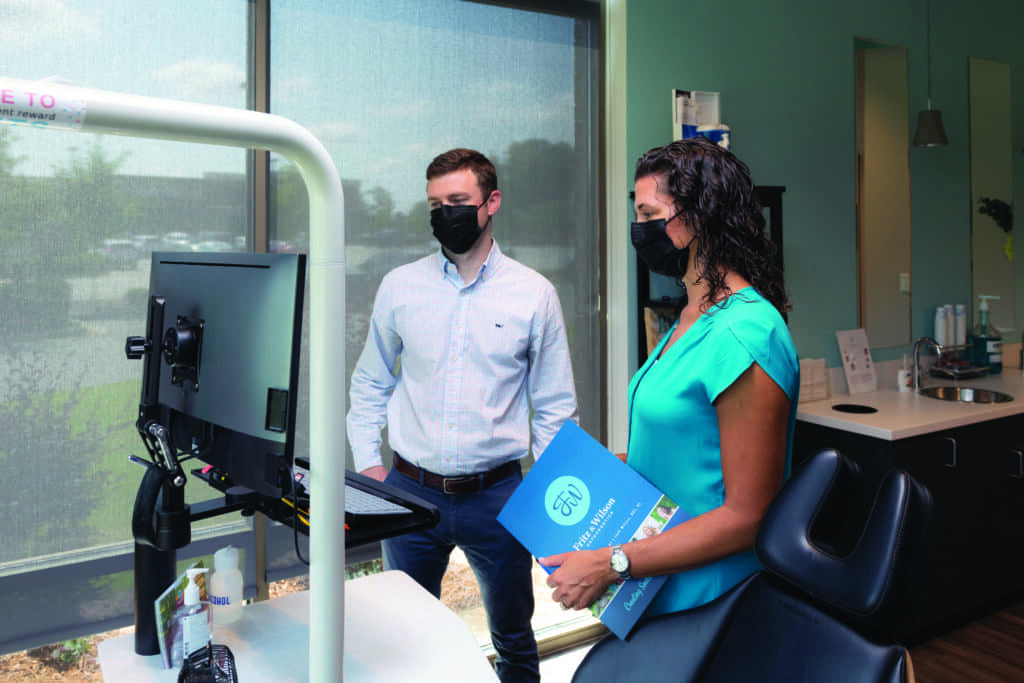
With the Data Comes Transparency
For orthodontists looking to attract highly qualified associates and potential business partners, those details can make the difference. From Wilson’s perspective as a newer doctor (also married with a 17-month-old daughter and an infant son), the transparency generated by Gaidge contributed to his decision to join Fritz’s practice.
“Gaidge helped me wrap my head around how the big picture looked for the practice,” Wilson remembers. “Having that readily available on your phone, Kristen could explain to me why we do a same-day start incentive, and she could look at where we were this year compared to last year.”
With that, Fritz remembers Wilson pointing out how the depth of Gaidge’s analytics could be a real benefit to residents making their first employment decisions. “I remember you saying that you wish some of your co-residents had access to Gaidge right away so they could see the numbers and know whether to buy in. Gaidge makes the practice pretty transparent. If a graduating resident goes into a new practice, they can immediately see the health of the practice. They don’t have to worry that the doctor is hiding some terrible accounts-receivable drama or something like that, because it’s all right here.” OP
Greg Thompson is a freelance writer for Orthodontic Products.





